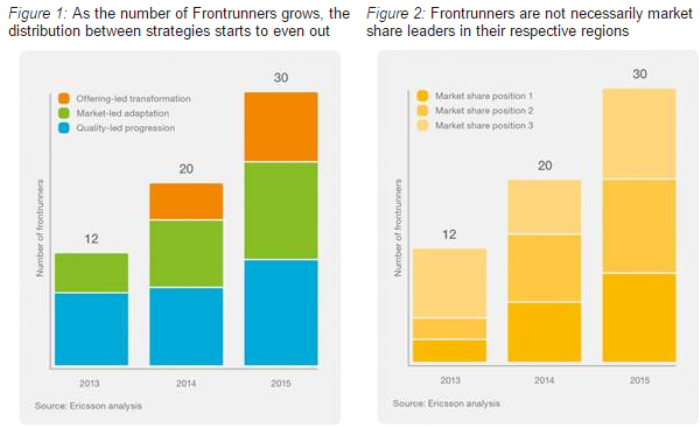Telecom operators, who have evolved both their networks and their business models, gained 9.6 percent CAGR while their rivals achieved 2.7 percent between 2010 and 2014, said a study from Ericsson, in collaboration with Ernst and Young.
Telecom markets without Frontrunners have negative growth of 1.4 percent.
Ericsson has identified three distinct strategies adopted by these successful telecom operators or Frontrunners.
Frontrunner strategies:
# Quality-led progression: These Frontrunners differentiate through high-performing networks and high brand preference
# Market-led adaptation: Includes Frontrunners that differentiate through quick adaptation to market conditions
# Offering-led transformation: Refers to Frontrunners that differentiate by being first to market with uniquely designed offerings
The study also revealed a number of ways in which Frontrunners are similar including their views on connectivity and services as differentiators rather than commodities, and their focus on innovating new revenue streams rather than maximizing old ones.
The Ericsson study said Frontrunners display greater interaction between marketing and technical roles, rather than the traditional silos, and they leverage network performance by either utilizing superior network performance as a differentiator or by improving network performance to meet customer expectations.
Martin Sebelius, executive director of Nordic Advisory, EY, said: “We see that despite their different strategies, frontrunner operators share a common commitment to network quality. Frontrunners constantly seek new ways of challenging industry conventions to make connectivity more relevant to people, business and society.”

Patrik Cerwall, head of Radio Strategic and Tactical Marketing, Ericsson, said: “Frontrunners focus on growth, both enhancing the core business while at the same time exploring new markets and capabilities to secure future revenues, such as IoT (Internet of Things) and vertical solutions.”
The journey toward 5G in 2020 will be marked by both new technology advances and new business models, but that transformation really started with the shift from voice to data-driven networking. The operators who are managing that transition successfully may provide the blueprint for success in 5G.
In 2013, most of the 12 Frontrunners were associated with the Quality-led strategy, leveraging their size and assets to deliver quality, and achieve profitable growth.
In 2014, the number of Frontrunners increased to around 20 and included Offering-led operators. By 2015, there will be 30 or more Frontrunners, with distribution between strategies starting to even out. In 2013, most Frontrunners were #3 by market position. By
2015, Frontrunners will have representation across the top three market share positions.
Baburajan K
[email protected]





